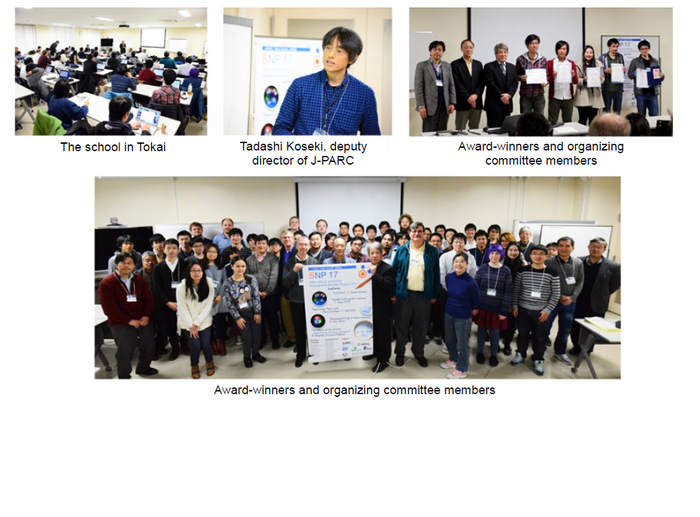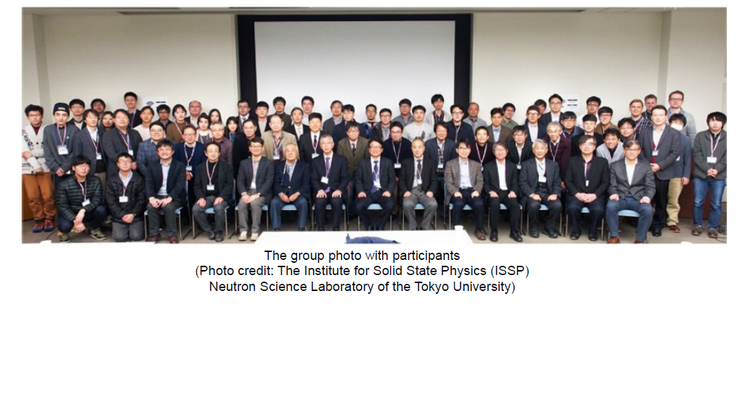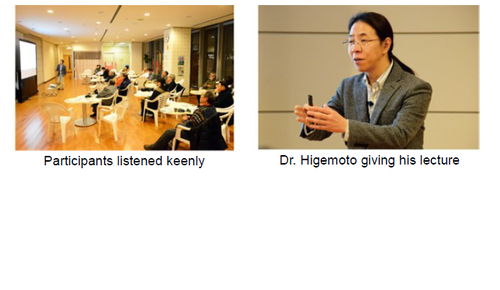J-PARC NEWS January 2018 (Issue #153)
Happy New Year and warm greetings as we begin 2018!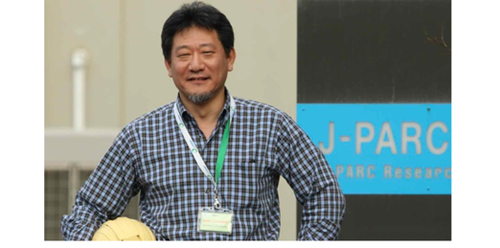
I would like to take this opportunity at the beginning of the new year to discuss the role of science in society. Science has two aspects: (1) its birth from intellectual curiosity in an attempt to understand the essence of nature mainly through the consideration of natural philosophy, and (2) its development from practical needs such as astronomy or measurement. Pythagoras, who was an ancient Greek mathematician and philosopher, established the idea that the whole universe from chord structures to orbits of planets obeys the law of numbers as the former example and put emphasis on the pursuit of these principles, while developing geometric procedures as the latter example. These two points of science – (1) developing as a result of intellectual curiosity and (2) practical needs have been referred to as the “both wheels” in developing science from an early stage in human history.
Later, as a result of strong curiosity, humans developed procedures for investigating the origin of the universe by making an observation up to the end of the universe, approached the origin of materials by the discovery of electrons and the atomic nucleus comprising of quarks and neutrinos which are undividable elementary particles and grasping their interaction, and acquired a technique for modifying genes which are what is called a design of life. Science technology has developed as it has responded to the practical needs of society, which has significantly changed society.
Research supported by curiosity have developed in each field and contributed to the expanding of human knowledge. However, at times scientific research can be hindered due to budget restraints even intellectual curiosity exists. We may now be at an age when social needs should be clarified and individual scientists are required to have the mindset to comprehensively contributing to society.
J-PARC issued twelve press releases of research last year which were also published in fifty-two newspaper articles. Eleven newspaper reports were published but not relevant to the presses (relevant to research contents). Research releases cover research results regarding the stimulation of intellectual curiosity as represented by neutrino oscillation to the results leading to the development of new solar cell materials - which are results directly responding to social needs.
J-PARC will promote “both wheels” as a multipurpose facility this year. I would like to conclude my greetings by emphasizing my dedication not only to produce good research results but also to share them with a wide audience so that many can benefit.
January 15, 2018
Naohito Saito, Director of J-PARC center

■ Successful muon acceleration experiment using Radio Frequency Quadrupole (RFQ) Linac (October 2017, J-PARC)
In late October 2017, the research group, preparing for J-PARC's muon g-2/EDM experiment*, successfully demonstrated accelerating slow negative muonium ions (Mu-) to 90 keV for the first time in the world. This experiment was conducted using RFQ at a muon beamline of the Material and Life Science Experimental Facility (MLF). This accomplishment was led by Masashi Otani (High Energy Accelerator Research Organization assistant professor) from the J-PARC Center's accelerator group, Yasuhiro Kondo (The Japan Atomic Energy Agency assistant chief researcher), and Ryo Kitamura (Tokyo University School of Science graduate student) and others. It was a big step forward to the main experiment.
* The experiment aims to measure muon anomalous magnetic moments (g-2) and electric dipole moments (EDM) with the world's highest accuracy.
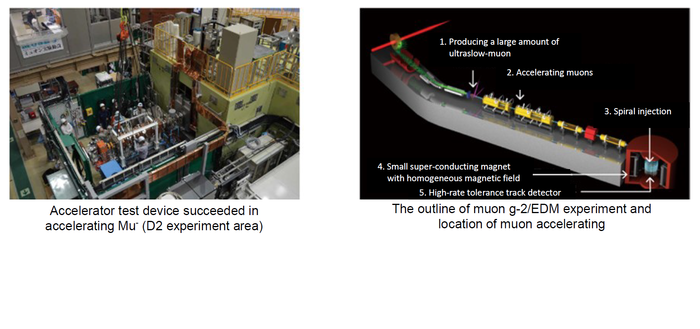
■ International School for Strangeness Nuclear Physics "SNP School 2017" (December 14-16, J-PARC)
Begun in 2012, the 6th "The SNP School 2017" opened for three days from December 14 at KEK Tokai Bldg. #1. It had taken place in Tokai and Sendai area, and it was now time for the Tokai area. The school consisted of students, instructors, organizing committee members, and others; the total of 63 people included 30 participants from overseas. At the opening of the first day, Tadashi Koseki, J-PARC Center deputy director, greeted and introduced J-PARC to the audience. For the next three days, five instructors gave lectures, which included themes of cold atoms, hadrons, hyper nuclei, and space. On the second day, students presented 29 poster sessions, and a J-PARC tour was given, which included the Material and Life Science Experimental Facility (MLF), and neutrino and hadron experimental facilities. Every school student was awarded a certificate of completion during a ceremony on the last day, and the instructors and the organizing committee members voted to choose five students who gave the most excellent presentations. They were given the Hashimoto prize, SNP School Incentive prizes, and *ANPhA prizes. The school is planned to open in Osaka next year.
* ANPhA:Asian Nuclear Physics Association
■ KOTO experiment collaboration meeting (December 15-17, J-PARC)
Last December, international collaborative researchers met to promote rare neutral kaon decay experiments. They have been working on KOTO experiments at the Hadron Experimental Facility. Thirty four researchers participated from Japan, the US, South Korea, Taiwan, etc. In the meeting, participants gave reports on the analysis status of all the acquired data, a preparation status and future improvements of the data readout system for the upcoming beam time this month in addition to a preparation status for this summer's detection instrument improvement and future plans. Participants were engaged in an active discussion.
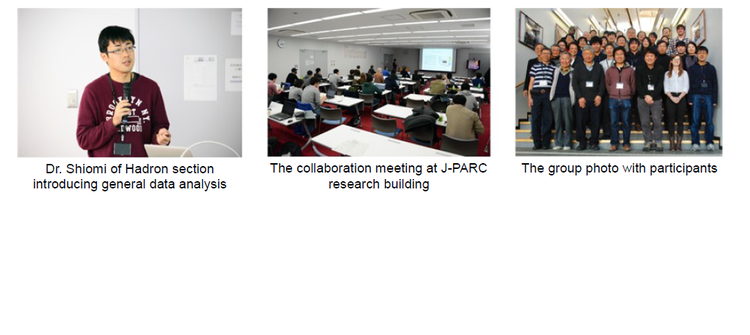
■ ImPACT J-PARC –information sharing meeting(December 25, JST Tokyo Headquarters in Ichigaya)
The J-PARC Center has been pursuing R&D for the "nuclear transmutation" technology to transmute long-lived Minor Actinides (MA)*, which are contained in high-level radioactive waste, into short-lived nuclides by using accelerators. Additionally, the Japan Science and Technology Agency (JST) has been pursuing similar R&D but for long-lived fission products (LLFP*) as one of the themes of ImPACT (Impulsive Paradigm Change through Disruptive Technologies) Program led by Program Manager (PM) Reiko Fujita. Because high intensity accelerators for nuclear transmutation was the common interest for both organizations, an information exchange meeting was held in December 2017 at JST Tokyo headquarters in Ichigaya. 10 people from ImPACT and 14 people from J-PARC joined in discussions on the current status and future collaboration for their R&D. The meeting was initiated by PM Fujita Reiko's greeting. J-PARC gave the status of J-PARC's accelerator, and reported on reliability required for the accelerators for nuclear transmutation and a development plan for such accelerators. In addition, ImPACT explained the status of nuclear data acquisition and results from elemental technology development for an accelerator and a target. J-PARC Director Naohito Saito concluded the meeting. "We found this information exchange meeting to be extremely beneficial, and it would be great to continue." They have decided to pursue collaboration, particularly the superconducting linac development which is a common goal for both organizations. Nuclear transmutation technology research is one of the motivations for the foundation of J-PARC, and the meeting reminded them of the necessity for strengthening of the R&D.
* Long-lived radioactive nuclides are generally categorized into minor actinides (MA) and long-lived fission products (LLFP).

■ The 16th Korea-Japan Meeting on Neutron Science (January 8-10, the University of Tokyo Kashiwa campus)
For 10 days starting on January 8, 2018, the 16th Japan-Korea Meeting on Neutron Science was held at the University of Tokyo Kashiwa campus (Kashiwa Campus Station Satellite and Institute for Solid Sate Physics). It was originally held in 2000 as the "Japan-Korea Meeting on Neutron Scattering Research" at the KEK Tsukuba Campus, and ever since, Korean and Japanese groups alternated hosting the annual meeting. It was the Japan group's turn this year, and the Institute for Solid State Physics (ISSP) Neutron Science Laboratory of the Tokyo University and J-PARC MLF took the leadership to conjointly hold ISSP Workshop and J-PARC Workshop. The meeting included a facility report and 63 presentations; sessions included were about magnetism and strongly correlated electron system, industrial applications, apparatus development, bio-soft matter, liquid, oral presentations, and poster presentations by novice researchers. Also, there were a total of 87 participants, consisting of 29 Koreans and 58 Japanese. For the facility report session, MLF announced that it resumed operation with a new target, and the Korean side also announced that the research reactor HANARO resumed operation in December and started adjustments, getting prepared for the users. Partly because the participants from both countries were young researchers, the general atmosphere of the meeting was very cheerful. The next meeting, the 17th Japan-Korea Meeting on Neutron Science will be held in Gyeongju, Korea in January 2019.
■ 25th J-PARC PAC meeting (January 15-17, J-PARC)
For 3 days from January 15, the J-PARC Program Advisory Committee (J-PARC PAC) was held on nuclear and particle physics experiment user programs with the high-intensity proton accelerator. In the meeting, researchers in charge of each experiment reported on the progress and plans for their experiments which are conducted at J-PARC's Hadron Experimental Facility and Neutrinos Experimental Facility. Also, five proposed experiments were assessed, and the meeting addressed the status and future plans of the J-PARC's accelerator, in addition to the accelerator operational plan for 2016-2018.

■ 12th J-PARC Hello Science "How particle muons show 'objects': big to small" (December 22, Tokai-village Industry and Information Plaza "iVil")
The Science Café “Hello Science” held by the J-PARC Center marked the first anniversary at the end of last year. In December, Wataru Higemoto from JAEA's Advanced Science Research Center gave a lecture about muons. He first explained about research that was recently featured on TV news. Muons, which are precipitating on Earth from space, were used to see through Khufu's pyramid in Egypt and possibly detected a large void inside. Also, J-PARC produces muons with the accelerator and conducts materials and life science experiments. He explained that archaeological artifacts can be non-destructively analyzed as well, and his hope in the future is to analyze meteorite samples, etc. that are brought back by "Hayabusa2" for carbon concentration and distribution.

